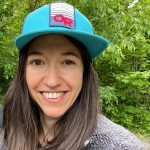Welcome to the Juneau Icefield!
The Juneau Icefield is a group of interconnected glaciers just north of Juneau, Alaska that extends into British Columbia, Canada and covers an area the size of Rhode Island. Maybe you’ve heard of the Mendenhall Glacier? It is part of the Juneau Icefield! The Juneau Icefield Research Program (JIRP) has been collecting data on the icefield since 1948.

There is a network of camps on the icefield used for education and research purposes. Our group headed to Camp 10 via helicopter. It is located on a nunatak (rocks protruding from the ice) at the Taku Glacier and consists of a collection of buildings including various places to sleep, a cook shack, outhouses, a lecture room, science equipment storage, and snowmachine maintenance. None of the buildings are heated and only a few have electricity in the evening when the generator is on!
Research
The Juneau Icefield is an important place to conduct polar research for many reasons, including that it is much more accessible than Antarctica and the long historical data record from JIRP. Also, the water content in the snow makes it both a challenging and important system to understand. You can read my other blog post to learn about all of the different research happening on the icefield while I was there (I was surprised to discover that NASA research was happening!)
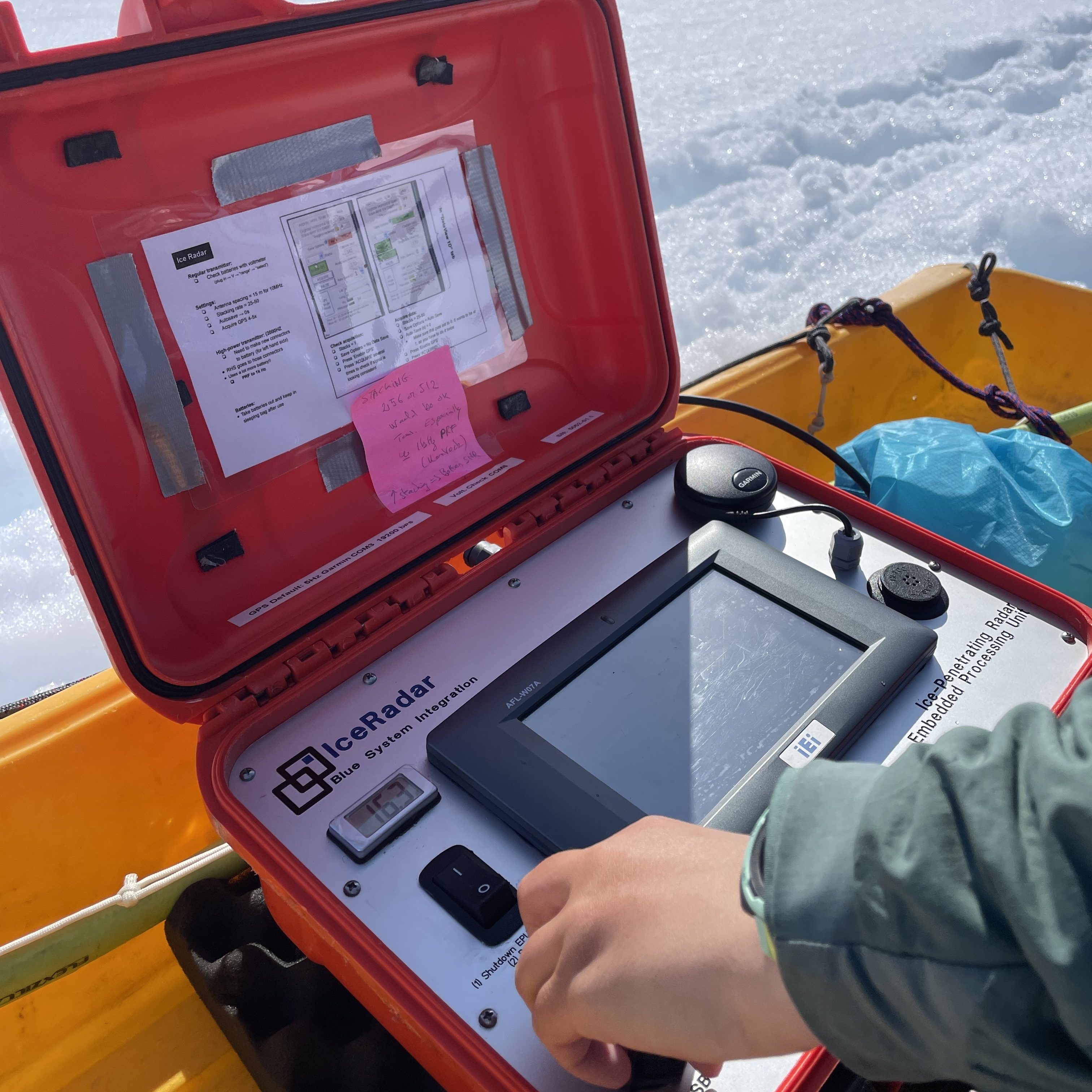
A Day in the Life on the Icefield
The very full, and at times bizarre, schedule has been a long-running joke where I teach. The Putney School, in Putney, Vermont is a boarding school, so most students and faculty (including me) live on campus. While on the Juneau Icefield, I noticed some parallels to the Putney Schedule, so I have dubbed this look at my daily schedule: Putney on Ice! You can also watch a video I made of a typical day for me: A Day on the Juneau Icefield.
4:00 AM: Wake up from sunlight shining in my face, attempt to go back to sleep
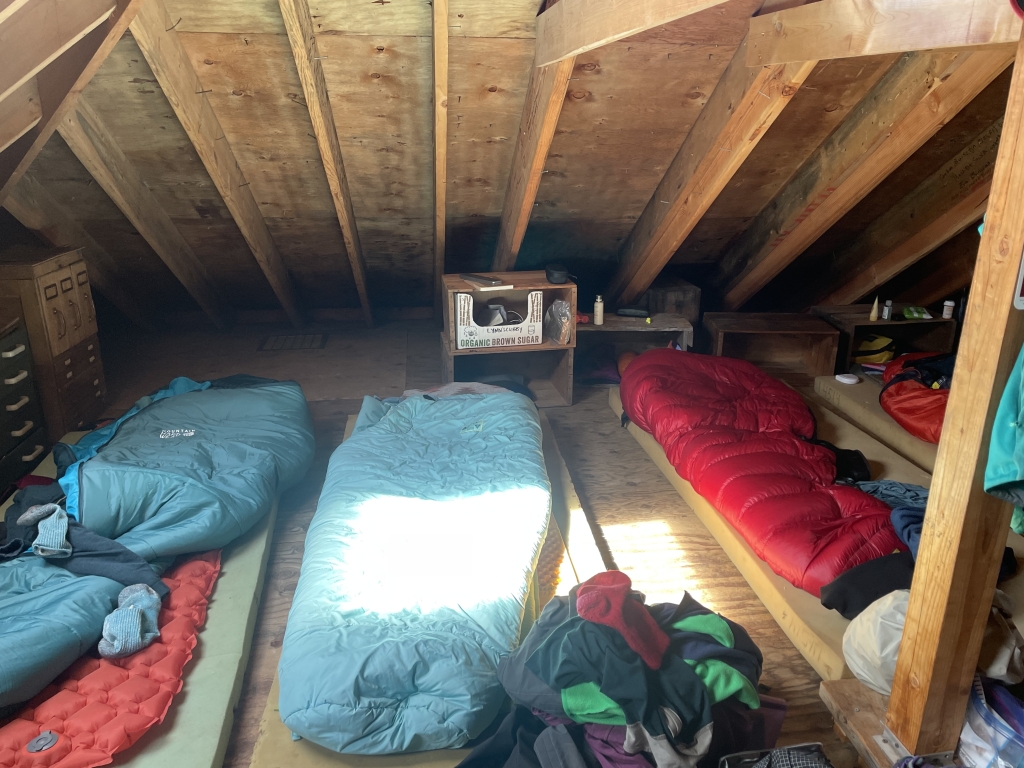
In the summer, Juneau experiences up to 18 hours of sunlight a day.
6:00 AM: Get out of bed, head to the cook shack to make the first round of coffee
There is no running water at the camp, so many buckets of water have to be carried from the small pond (large puddle?) before that first cup of coffee can be enjoyed!
6:30 AM: Breakfast crew starts cooking breakfast
I’m on Breakfast Crew today, so I work with Martin and Robert to make shakshuka for the group (~15 people). Teams of three work together to prepare breakfast and supper for the group, which ranged in size from 12-21 people over the course of the month.
8:00 AM: Breakfast is served!
The food for our month on the ice was flown in on helicopters at the start of June. This meant limited fresh vegetables. We were lucky to have a couple of small restocks of key ingredients such as butter, eggs, and apples over the course of the month. All of our perishable items were stored in coolers in a snow cave. Folks who didn’t cook wash the dishes and everyone packs a field lunch. Field lunches consist of leftovers from the day before or tortilla sandwiches. We also packed lots of bars and trail mix for snacks!
9:00 AM: Group stretching to prepare for a day in the field, followed by science meeting to discuss plans for the day
9:30 AM: Camp jobs
I am cleaning and restocking the outhouses today, so I grab a bucket of bleach water, trash bags, and rolls of toilet paper before heading to the four outhouses at Camp 10. If I finish my camp job early, I shovel snow out of the path down the hill so snowmachines can ascend it more easily.
10:30 AM: Head onto the icefield for fieldwork
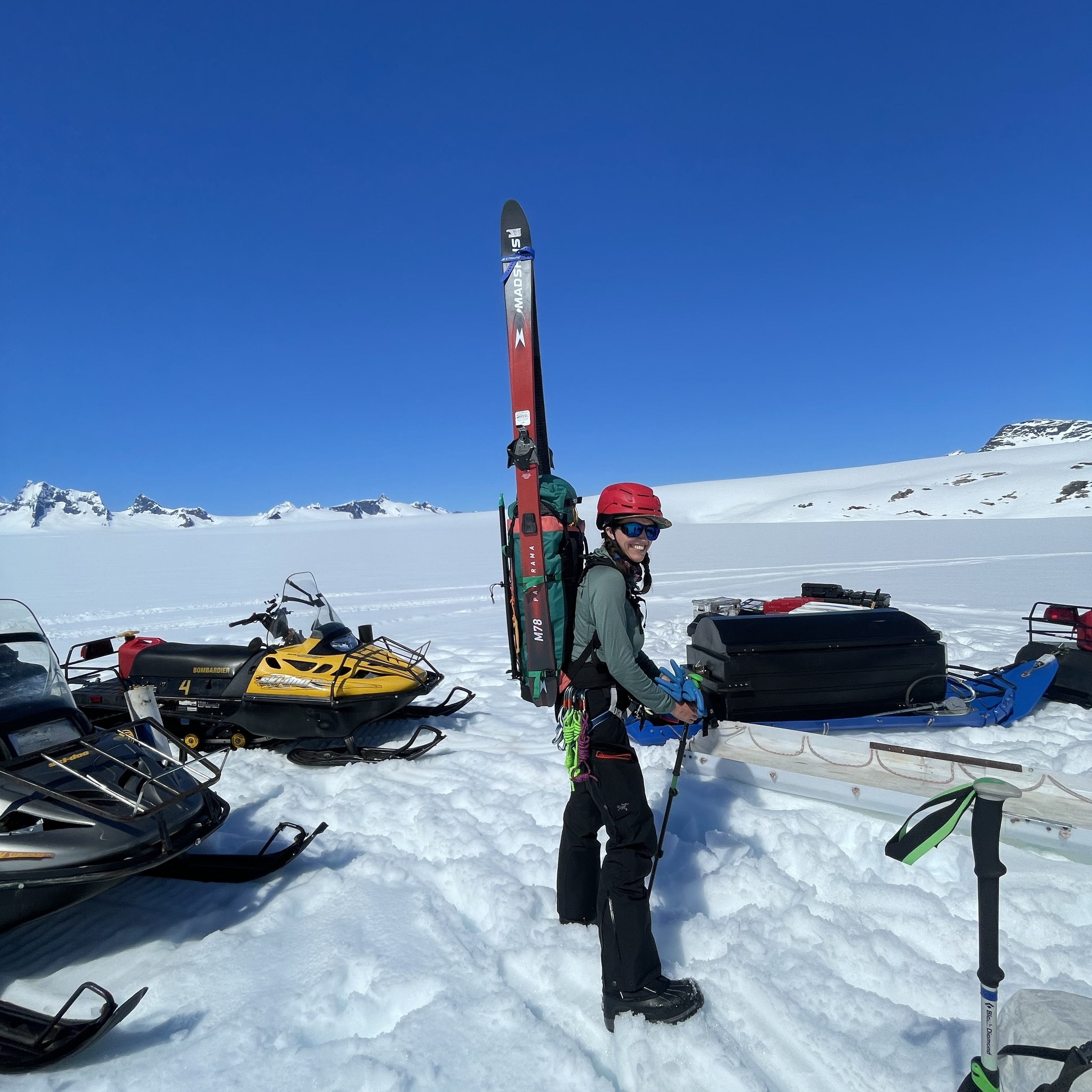
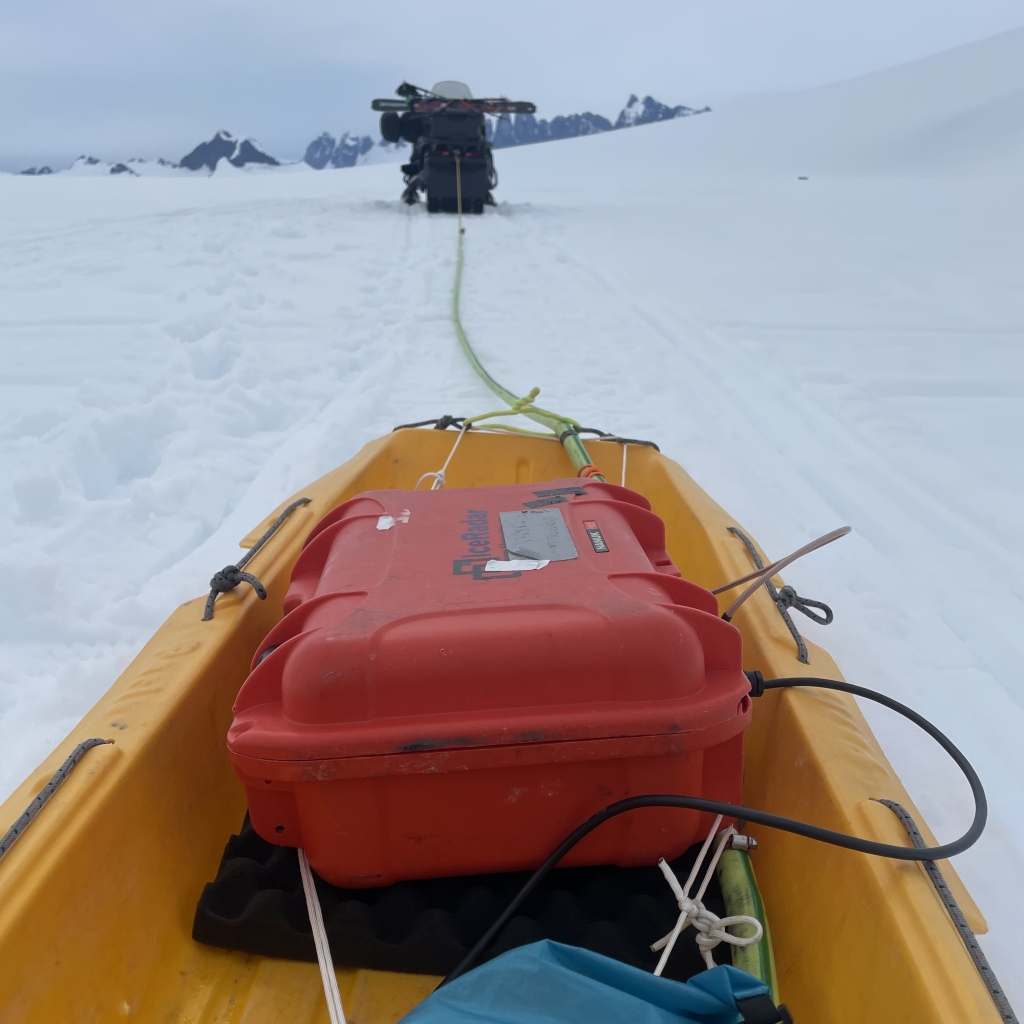
Meet at the top of the hill to hike or ride down the hill into North Basin, where the science equipment is stored. Today I’m working with Renée, pulling the Ice Radar behind a snow machine across the ice to look for the bed (bottom) of the glacier. More on that in my science post!
7:00 PM: Supper time!

I like to make pizza on the icefield. Today I whipped up 10 pizza doughs from scratch and then worked with the group to assemble toppings. My personal favorite is BBQ chicken pizza!
8:00 PM: Group stretching and planning the next day
Riding snowmobiles for long stretches of time is pretty uncomfortable, so evening stretches are a must! We also discuss plans for the next day and make any necessary group announcements
8:30 PM: Desert! Followed by relaxation time.
We decided to celebrate a different person’s birthday each night, and you can’t have a birthday without a treat! Today was Seth Campbell’s honorary birthday, so I made icefield milkshakes – I scooped up a big bowl of snow and added milk, sugar, and vanilla. Then individuals got to select additional toppings, such as cocoa powder, tang, mocha, and chocolate chips. I added maple syrup to mine. Delicious!
The generator is turned on for a few hours in the evening so folks can charge batteries and download data. It is also a good time to relax and hang out. At the Putney School, we have an evening arts time from 7:30-9; knitting is my evening art of choice!
11:00 PM: Lights out!
Bedtime! At Putney “In-Dorms” is the time you need to be in the dorm for the night.
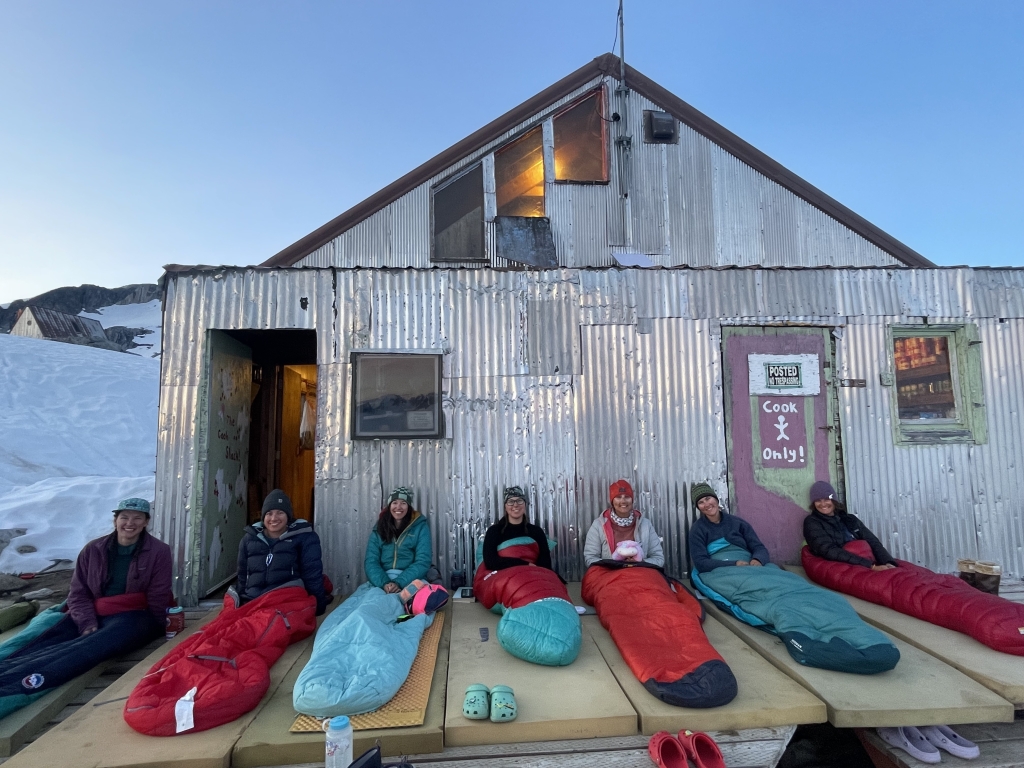
For more videos, find me on Instagram: @lynnconceivable
